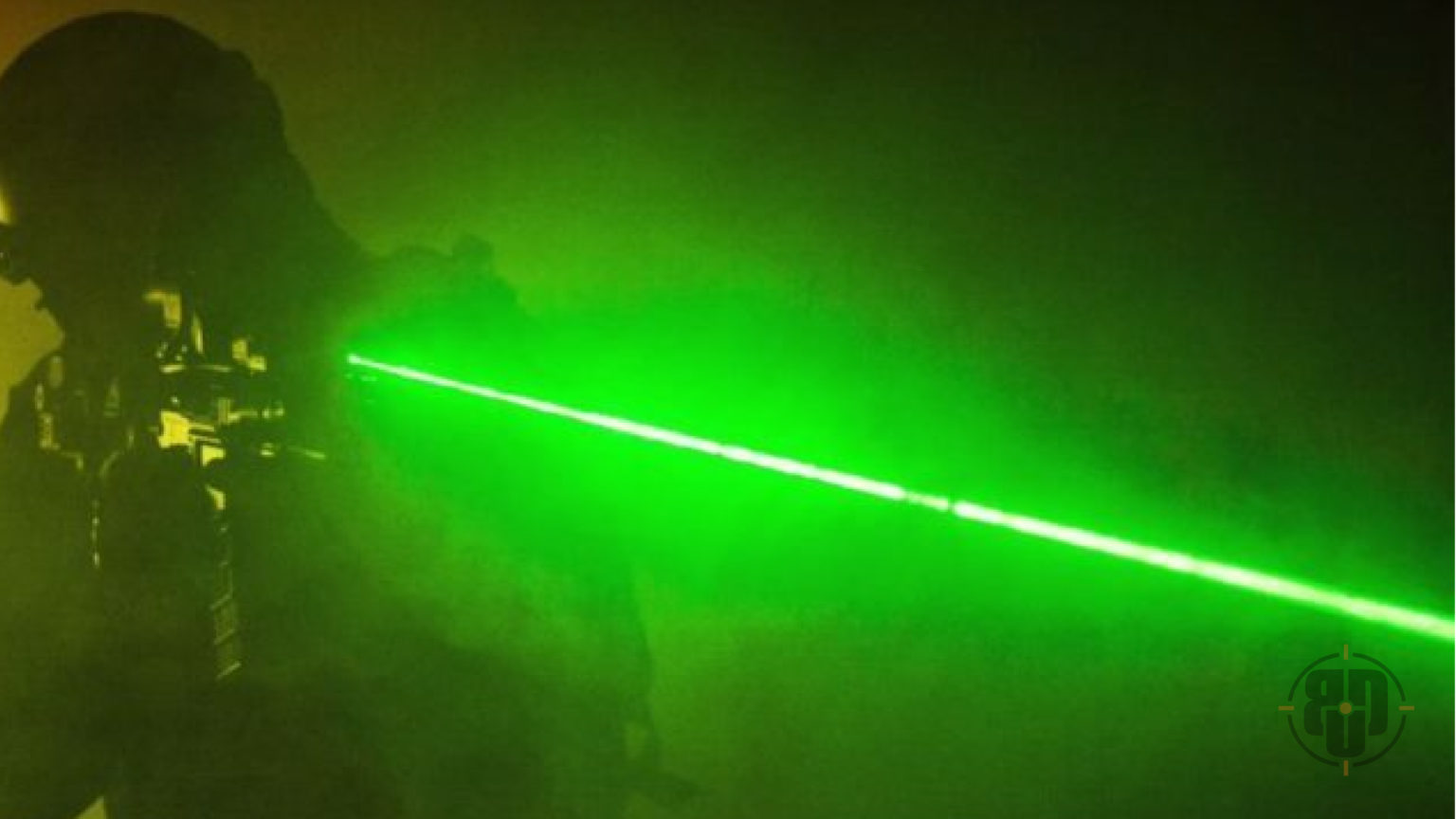
15 Second Briefing:
Essentially, a laser sight projects a beam or dot of light wherever you point your gun’s muzzle. Laser sights are used by new gun owners and the military for a variety of reasons. Because they are simple to use, anyone can learn to use a laser sight.
Should you get a laser sight? Ultimately, it comes down to preference, budget, and use.
A laser-sighting system on a carbine rifle or pistol sure does look cool. Everyone has seen them used in various action movies. When Arnold Schwarzenegger used a laser sight in The Terminator, they were in the realm of science fiction.
With today’s action movies, we’re pretty sure it’s a prerequisite for everyone to have laser sights on their handgun, AR rifle, carbine pistol, or shotgun to pinpoint their targets and lay waste to any and all threats.
What is a Laser Sight?
A laser is a coherent beam of light on a single wavelength. This means that a laser focuses the light in a way so you get a single pinpoint dot rather than the wide swath of light from a flashlight. Essentially, a laser sight projects a beam or dot of light wherever you point your gun’s muzzle.
Also Check Out: What Should You Do After Purchasing Your First Handgun?
Laser sights are small, compact, and made to fit nearly every firearm. Some firearms even come with laser sights already built into them. Laser sights have also become much more affordable in the last few years.
But, Do You Really Need a Laser Sight?
Short answer: No. A laser sight is typically not your primary optic. Even if you’re running a battery-powered red dot or holographic optic as your primary sighting system, your iron sights are your backup sights, and your laser is a tertiary sight. So you don’t need a laser sighting system.
Are Laser Sights Useful?
For some, a laser sight helps get on target quicker in a defensive situation. In tactical situations or if your main optic goes down, a laser sight can be a useful backup.
However, laser sights require batteries, and they are the most power-hungry tool besides a flashlight. Also, lasers travel in perfectly straight lines, and bullets—being subject to gravity—follow a curved, ballistic trajectory. They are also small and cannot be seen at far distances.
In bright light, a red laser is not as easily seen as a green laser. If you’re going to purchase a laser sight, green may be best (but they are more expensive). Our eyes recognize colors in the green spectrum much easier, and green work well in various lighting conditions from pitch black to daylight.
That’s not to say a red laser isn’t good. In the case of bright light, you can easily revert back to using your iron sights. If you want a smaller, lighter, cheaper laser, red is best. Red is typically readily available for pistol and revolver laser sights.
Laser sights are used by new gun owners and the military for a variety of reasons. Because they are simple to use, anyone can learn to use a laser sight. Laser sights are even prescribed by some instructors as a tool to troubleshoot inefficiencies in draw strokes, trigger control, and weapons transitions. In a professional setting such as law enforcement, the biggest benefit of a laser sight is that it shows you exactly where your firearm’s muzzle is facing.
Laser sights do provide an advantage for self-defense. When you’re defending yourself with a gun in a high-stress situation, a half-second can mean the difference between life or death. A laser sight gives you a speed advantage to get on target even if you’re not in a proper shooting stance.
Should You Get a Laser Sight?
Ultimately, it comes down to preference, budget, and use. As a self-defense tool on a handgun, some of our staff don’t recommend them—but others do. As a training tool (as previously mentioned), a laser sight can be very helpful. And for some tactical training or close-quarter combat (CQB) on an AR rifle or carbine pistol, it can be useful when scanning rooms.
When considering enhancements and modifications to your firearms, always remember the acronym CYA: “Can You Articulate?” There should be a reason why you’re making changes that improve your ability to use your firearm when it’s necessary to deploy it in a defensive situation. If you add a laser sight, make sure you can easily explain why and how it helps (CYA). Not just because it’s cool or looks good.
Big Daddy Unlimited advocates strongly for Second Amendment rights because we believe that the right to keep and bear arms exists to protect all of the other God-given rights of American citizens. Become a member today to join our community of freedom-loving Americans, and let’s work together to support and defend our Second Amendment rights.
